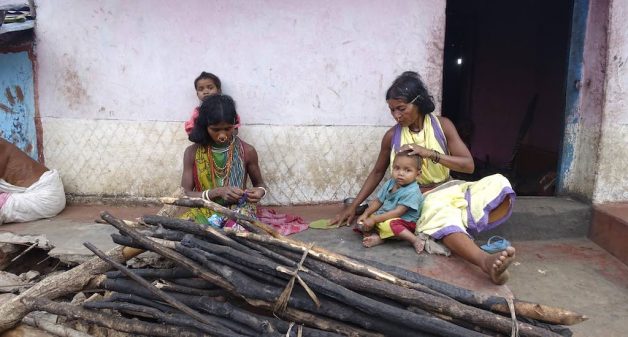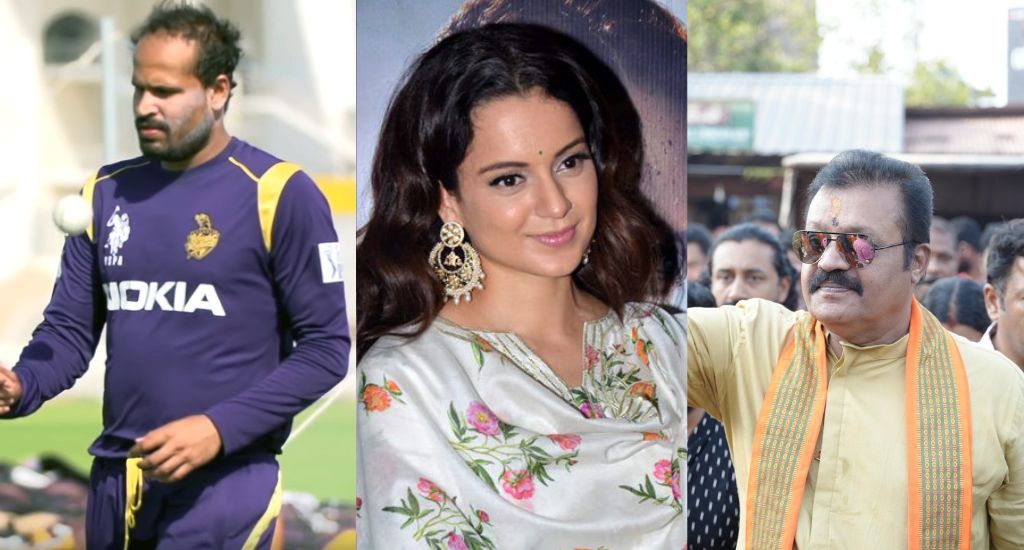It seems that the Dongria Kondhs, a particularly vulnerable tribal group (PVTG) who live in the Niyamgiri Hills of Rayagada and Kalahandi districts in southern parts of Odisha, now have to fight for their ethnic embroidered kapdaganda shawl, which is being replicated by some designers for the past few years.
The kapdaganda shawl of Dongria Kondh tribes that symbolize their rich heritage, culture and identity is now being replicated and being sold out online by various apparel sites. Researchers of tribal culture and tradition feel it is high time that the state government should get geographical indication (GI) tag for Kapdaganda, the prestigious shawl of Dongria Kondh tribes.
Every evening in the small hamlets spread over Niyamgiri hills, the Dongria women of all ages sit in their verandahs, individually or in a group, busy embroidering Kapdaganda, the shawl that symbolizes their heritage and ethnic identity. Woven with excellent craftsmanship, Kapdaganda is mostly woven by unmarried girls. They embroider this shawl for their own use or they gift it to their brother and father as a symbol of affection.
The unmarried women of Dongria Kondh community embroider this shawl to gift it to their beloved ones as a token of love. “We wear this beautifully embroidered Kapdaganda shawl on every occasion, whether it’s a marriage, festival or any other occasion. The shawl not only differentiates us from other tribes but also empowers us. So, this shawl is available in every household,” Sabri Kutruka of Khambesi village in Kurli Panchayat, told VillageSquare.in. “Also, women get happiness while embroidering the shawls.” Sabri is now engaged in embroidering a shawl for her daughter.
Ethnic implications
The off-white coarse cloth mainly used as a raw material for Kapdaganda is procured from the Domb community, a local Scheduled Caste community, by bartering harvested crops. The motifs are embroidered on the cloth by a needle using three different colored threads. The three colors are green, yellow and red. Each color carries an implication manifested with socio-cultural values.
Green symbolizes their fertile mountains and hills, prosperity and development of their community, while yellow stands for peace, smile, togetherness, health and happiness. It is also regarded as sign of auspiciousness. Red is the symbol of blood, energy, power and revenge. It also signifies appeasing of deities by offering blood sacrifice of animals and birds.

“Earlier, we used to first prepare different colors from leaves and flowers and soak them in threads,” says Sumiti Kutruka of Khambesi village. “Now it has become difficult to collect those leaves and flowers and we are buying these threads from local market.”
The hand-woven motifs in the shawl are mainly different types of lines and triangular shapes that reflect the importance of mountains for the community. The triangular shape of mountains recurs in the designs painted on the walls of the village shrine as well as in the colorful Kapdaganda they wear.
Lessened interest
Although the ethnic shawl reflects their culture and tradition, young tribal girls are no longer taking an interest in wearing it, which once was mandatory for them. “The changing lifestyle patterns of young tribal girls of this hilly area have reduced the use of these traditional shawls,” Damayanti Wadaka, a veteran woman weaver of the community, told VillageSquare.in.
However, the Kapdaganda shawl is in huge demand among domestic and international tourists for its geometric patterns. Some traders have already started making cheap replicas.
“To perverse this heritage-oriented culture and skill, in 1983, when I was working as a special officer at Dongria Kondh Development Agency (DKDA), I had put forth a proposal before the state government. The government released funds to conduct a workshop to promote Kapdaganda where women weavers participated,” Ananta Charan Sahoo, a researcher of Dongria Kondh tribes, told VillageSquare.in. “But, at that time the workshop and training emphasized on preserving the heritage because we found young women are not taking interest in embroidering the ethnic shawl.”
“Now it is high time that government should support and take steps not only to preserve the heritage-oriented skills of PVTGs, but also they should earn livelihood by embroidering the shawl. This Kapdaganda shawl is one of their cultural identity, which needs immediate intervention,” he said. “The young generation, which is now forgetting their culture and tradition, should be trained with this culture-specific skill.”
There is a huge demand of designs of different tribal groups, especially their designs of mountains, hills, deities and specific colors in both the domestic and international markets.
Initiatives by administration
To prevent duplication from traders, the district administration has decided to create a national market for the product in collaboration with the handloom department. The initiatives seeks to ensure that originality is be maintained and no machines are used in preparing it.
“Seeing the popularity of its patterns and motifs, efforts will be taken to replicate the designs of Kapdaganda on bags, mobile phone covers and conference pads,” said an officer of the district administration. The district administration has recently launched a three-month long program — called Ama parampara ama jeevika (our tradition, our livelihood) — to train more weavers in traditional craft of Kapdaganda.
At least 235 women of all ages from 16 villages of two village councils —Kurli and Munikhol — are being trained in crafting the Kapdaganda shawl.
“Besides training, if government encourages women weavers by providing raw materials and procure the product directly from them, this will be another livelihood opportunity for them,” said Sahoo. This training initiative may help to revive the weaving of this unique ethnic shawl among young women of the tribe, he said. If the state government gets a GI tag for the ethnic shawl, the designs will not be replicated, the researcher summed up.


